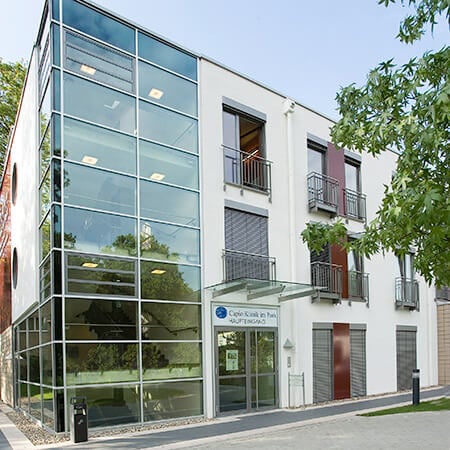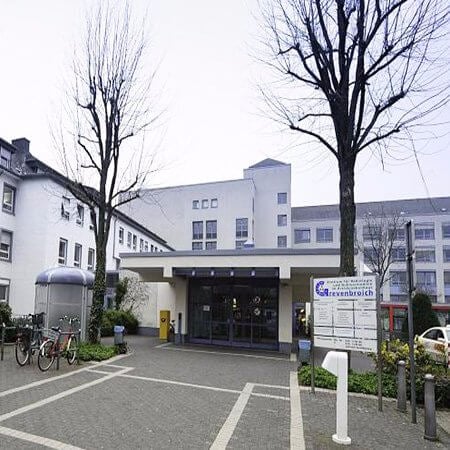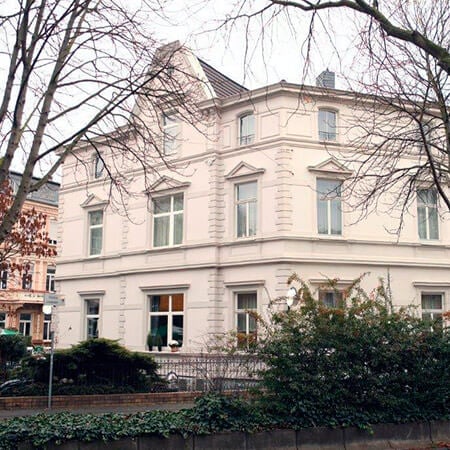About the disease
Varicose veins with a trophic ulcer occurs, when wounds start to turn into ulcers on the leg due to venous deformations, also known as varicose. This disease in 80% appears again later, meaning that the ulceration becomes recurrent when the first wound had formed. The most common place where these kinds of wounds develop is medial distal leg. They can cause considerable pain and can take a long time to heal completely. Usually varicose veins with a trophic ulcer develop under the increased pressure in the legs. The abnormal pressure develops in veins and arteries, when blood is not pumped out properly and delivered in sufficient amount to the legs from the heart. As a result, veins of the leg start to stretch and the process of ulceration begins. Also, deficient amount of fibrin of the leg prevents it from receiving a proper amount of oxygen and other important nutrients, thus making the progression of an ulcer faster and more complicated to heal. Moreover, white blood cells can start to accumulate in the blood vessels and as the result an inflammatory process begins, as abnormal amount of white blood cells accumulated in one place makes it more likely for an inflammation or infection to begin to develop. Trophic ulcer, which is one of the most dangerous types of ulcers, develops when tissue becomes necrotic due to rejection of proper blood supply to this tissue. Trophic ulcer can develop if varicose veins have not been treated for a long time. Varicose is a very common condition, occurring in 25% of all adults. Varicose develops when veins in the legs become enlarged and overfilled with blood, resulting veins having bluish or purple color.
Symptoms
- Eczema on the leg
- Heaviness
- Cramps in the leg
- Itching in the affected area
- Burning
- Bluish or purple colored veins in the nearby area
- Heat
Diagnosis
- A general examination is usually enough to diagnose varicose veins with a trophic ulcer. A doctor will examine the leg for the areas where veins changes their color and will also examine carefully the eczema, which can be an ulcer. Usually, venous trophic ulcers are wet, as they ooze liquid, whereas arterial ulcers are dry. Also, the area around the trophic ulcer is swollen and painful. Also, at this area the hair does not grow, which is an indicator of beginning of tissue necrosis or insufficient supply of nutrients which unable normal growth of hair in the area.
Treatment
- Stripping and crossectomy is a surgery used to ligate the vein, where ulceration occurred and also to strip, remove, the varicose veins. Thus, further development of ulcers is prevented and varicose veins are not likely to recur.
- Skin grafting and necrectomy is a surgery used to remove the dead tissue where ulcer developed, if the process of necrosis began. After the tissue was removed a surgeon grafts the skin using an artificial graft or an area from another part of patient`s body.
- Ulcer resection, vacuum bandage is used to resect the ulcer and then to vacuum bandage it for a faster recovery. This procedure is very effective, although resection can also be performed without vacuum bandage.
Authors:
This article was edited by medical experts, board-certified doctors Dr. Nadezhda Ivanisova, and Dr. Bohdan Mykhalniuk. For the treatment of the conditions referred to in the article, you must consult a doctor; the information in the article is not intended for self-medication!
Our editorial policy, which details our commitment to accuracy and transparency, is available here. Click this link to review our policies.











